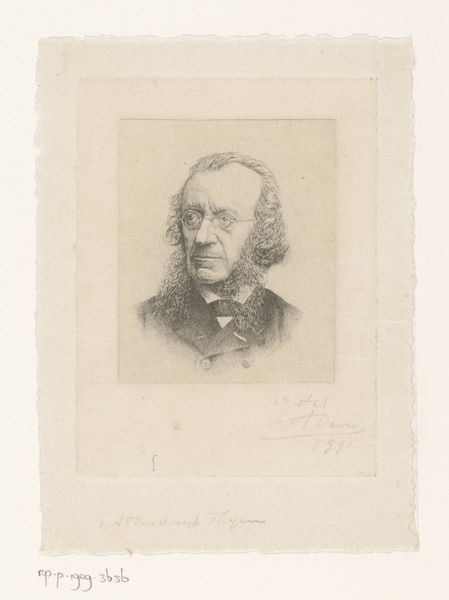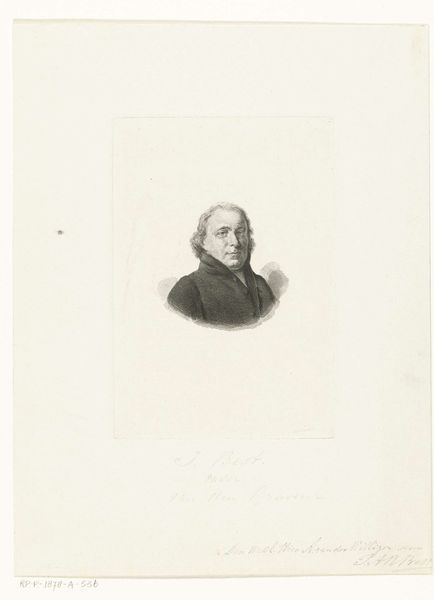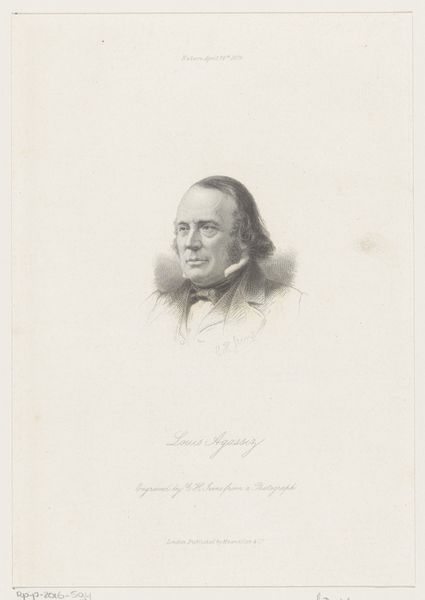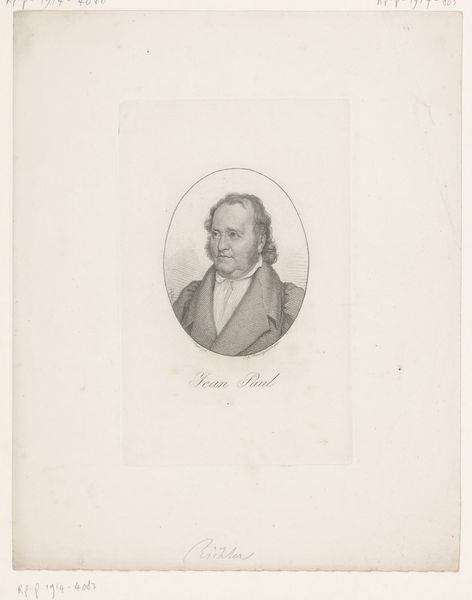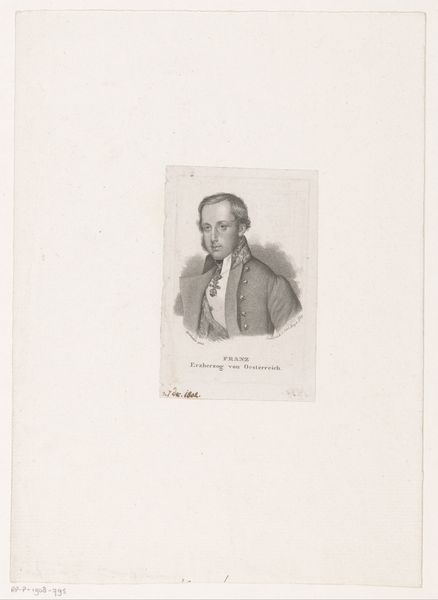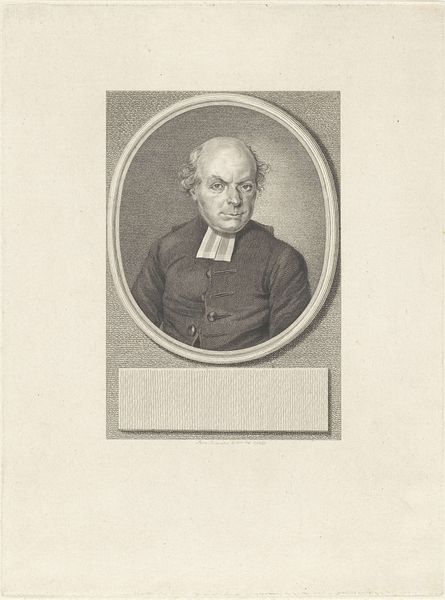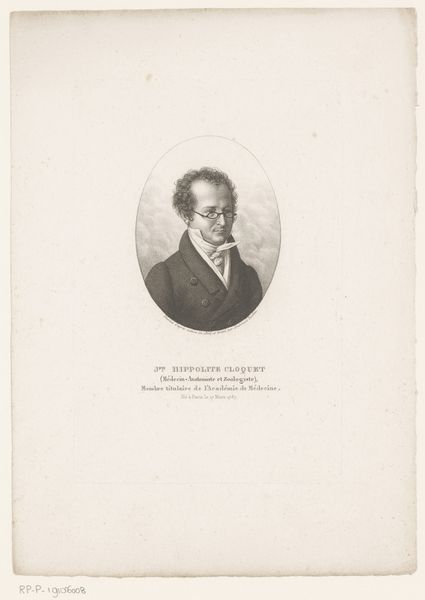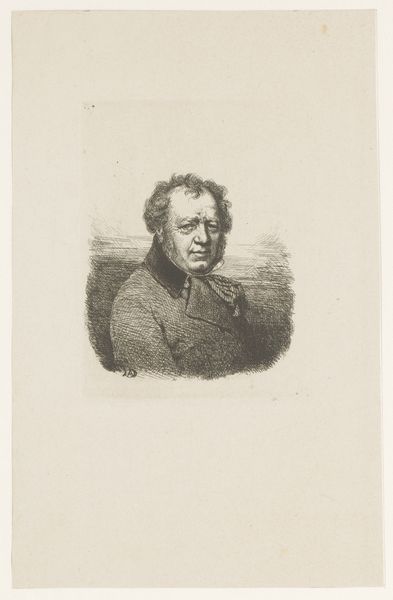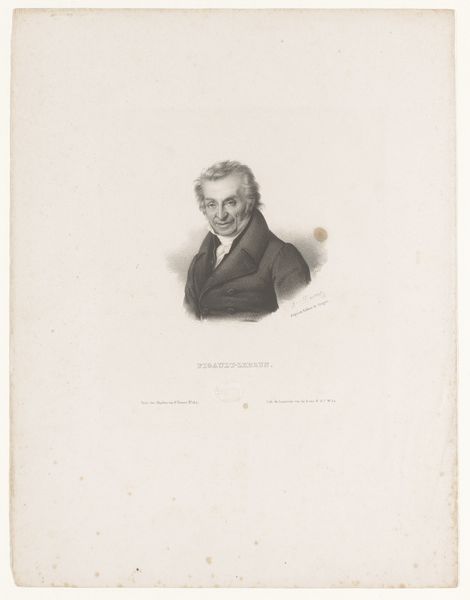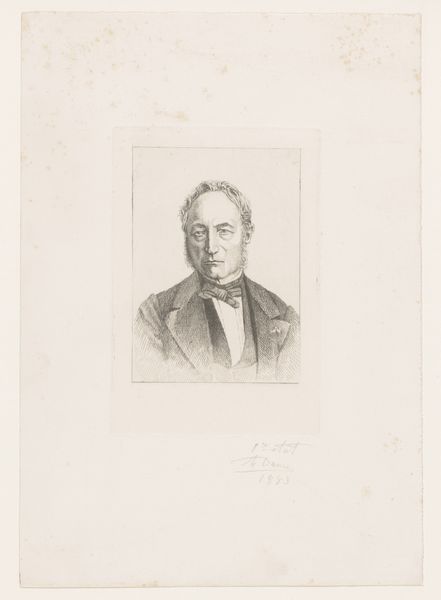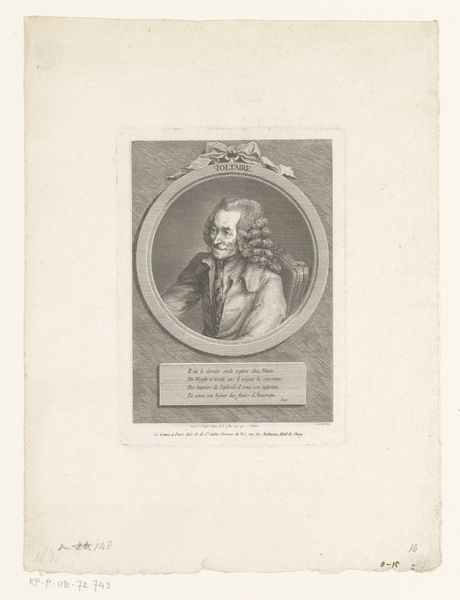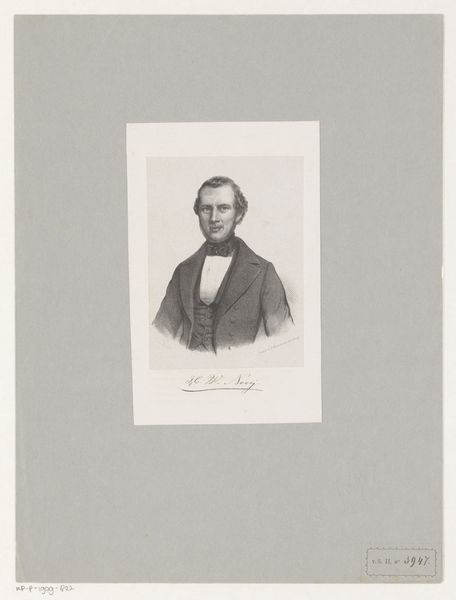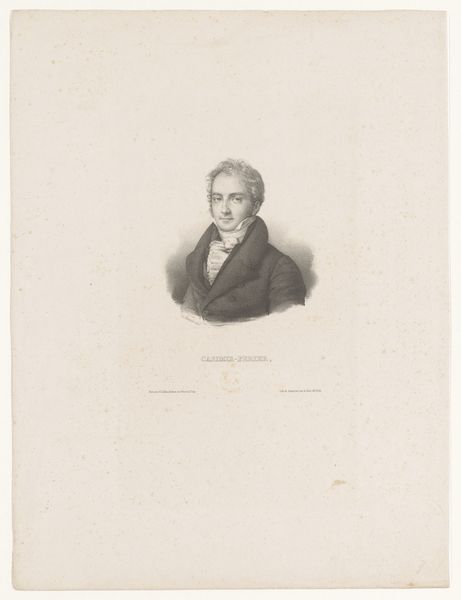
Dimensions: height 425 mm, width 320 mm
Copyright: Rijks Museum: Open Domain
Curator: The meticulous detail in this ink drawing immediately draws me in; there's a striking formal quality to it, but it seems somehow intimate. Editor: I feel like I know him somehow, yes. What can you tell us about it? Curator: This is Jan Veth’s 1893 "Portret van Joseph Alberdingk Thijm" held here at the Rijksmuseum. Veth, associated with both realism and Romanticism, beautifully captures his sitter's essence with a technique based on tight lines. Editor: You can see the craft in every delicate stroke of ink, forming line and shadow to define the features and fabrics of this upper class figure. There's an incredible layering happening in the work that speaks to material. Curator: Indeed, this work places Alberdingk Thijm in a lineage of prominent cultural figures of the era. Consider Alberdingk Thijm's profound influence as a champion of Neo-Gothic architecture, or more particularly the architecture that reinforced catholicism. Editor: But is this the material representation of Thijm’s cultural work, a solidifying or making concrete of that work, or does Veth's act of committing the portrait in ink serve as such? He looks quite austere. What else did he contribute to society that's relevant? Curator: Alberdingk Thijm's contributions extended far beyond architecture; he was also a renowned writer and critic and key advocate for Catholic emancipation within Dutch society. Editor: It's like the ink itself embodies that act of advocacy and solidification. The portrait transforms the abstract notion of societal change into a tangible image, bound by the limits of medium, line, and frame, don’t you think? Curator: Precisely! And perhaps his conservative vest helps reinforce the image that it had to be bound for approval and social permission at that moment in history. This speaks volumes about identity formation and the role of portraiture in solidifying one’s position and ideals within society. Editor: It's a fascinating interplay between subject, maker, and the socio-political forces that shape their material existence and cultural value. Curator: Agreed; Veth's work certainly makes us contemplate the individual within broader narratives, and it really encourages an examination of power, religion, and class. Editor: An exploration well-crafted in ink, indeed!
Comments
No comments
Be the first to comment and join the conversation on the ultimate creative platform.
